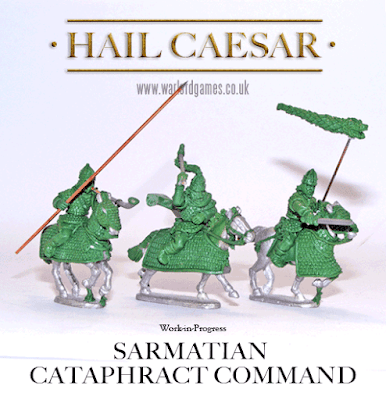 |
| Caesar and Cleopatra. And her gimp. |
|
|
Didn't make a lot of progress on wargame stuff this weekend. Reglued some Numidian spears that came loose (can superglue go bad?), primed them again, built a few Roman command figures and blocked in some Germanic command. While I was puttering out with that stuff I did catch a documentary on Cleopatra's sister Arsinoe. I like the Roman civil war era (Julius Caesar! Pompey! Mark Antony! Octavian!) but the actual battles of of two primarily Roman armies facing off aren't as interesting to me. I like asymmetric forces, so the mirror battles of legion vs legion don't stoke my enthusiasm. I've been toying with the idea of running a hypothetical "Cleopatra at War" game, where Antony and Cleopatra forgo a naval battle for a land engagement against Octavian. The documentary highlighted a battle I hadn't been aware of though, the Battle of the Nile in 47 BC. Here's how it went down:
Pompey and Caesar had been duking it out when Pompey was forced to flee. Hoping to recruit the Egyptians as allies he arrived in Alexandria seeking shelter and aid from the current monarch Ptolemy the XIII. To ingratiate himself to Pompey's enemy, Caesar, the boy king Ptolemy chose to kill Pompey instead! Right there as he got off his boat, beheading him in front of his wife and children! Yikes!
When Caesar showed up he was peeved. Even though Pompey was Caesar's enemy, he was still a consul of Rome and you just can't gank a guy like that while he's bounding down the gangplank, all sighs of relief and outstretched hands.. Caesar imprisoned Ptolemy and took control of the city. Cleopatra, who was exiled at the time, saw her chance to take the Egyptian throne. Sneaking into the palace she allied herself with Caesar, who elevated her to regent. Ptolemy and Cleopatra's younger sister Arsinoe escaped the palace and gathered an army of loyal Egyptians in the desert intending to retake their city by force.
Caesar was short of manpower and had to tighten up his grip on Alexandria so he sent a messenger to his ally Mithradates in Syria. Mitty responded and headed south with his army. getting the jump on Ptolemy's army as it was heading towards Syria, presumably on its way to gather more troops and supplies. Surprised, Ptolemy recoiled, he and his army fleeing to a fortress on the Nile. Caesar was able to join Mithradates and launched a joint attack on the fortress.
Ptolemy's army was drawn up on the flat plain before the fortress town, but there was an easier unguarded path along the river. Protecting the path into the rear of Ptolemy's camp were numerous ships manned by slingers and archers. Caesar did not want to launch an attack into the teeth of Ptolemy's army, but there wasn't enough room to maneuver along the banks of the river into its weaker rear. Caesar split off a smaller force to flank the Egyptians and attack on the river side while his main force occupied Ptolemy's army.
The flanking force caught the Egyptians flatfooted, and their diversion turned into a major success, completely routing the few defenders on the river side. When the sounds of battle reached the Egyptian army from their rear, they panicked and fled into the city, with Caesar's army nipping at their heels. The Egyptians attempted to escape to their ships, leaping from the fortress ramparts into the water below. Ptolemy managed to make it to boat, but it sank under the weight of too many refugees. Ptolemy was drowned, and the armed rebellion against Caesar and Cleopatra was finished. Cleopatra's sister Arsinoe was forced into exile, but when Caesar was murdered, Cleopatra sent assassins to kill her sister to prevent the possibility of a coup.
In the grand history of Caesar's ascension to dictator, this is a tiny confrontation, but it has just the sort of forces I'd be interested in painting up. I only have a snippet of info on this particular battle but there's a lot of interesting stuff here. Caesar himself, phalanxes of Egyptian troops, a fortress, ships with combatants on them, terrain that's more than just a flat plain. Great stuff! And a good place to start if I want to run with a hypothetical battle with Cleopatra taking the field.





















